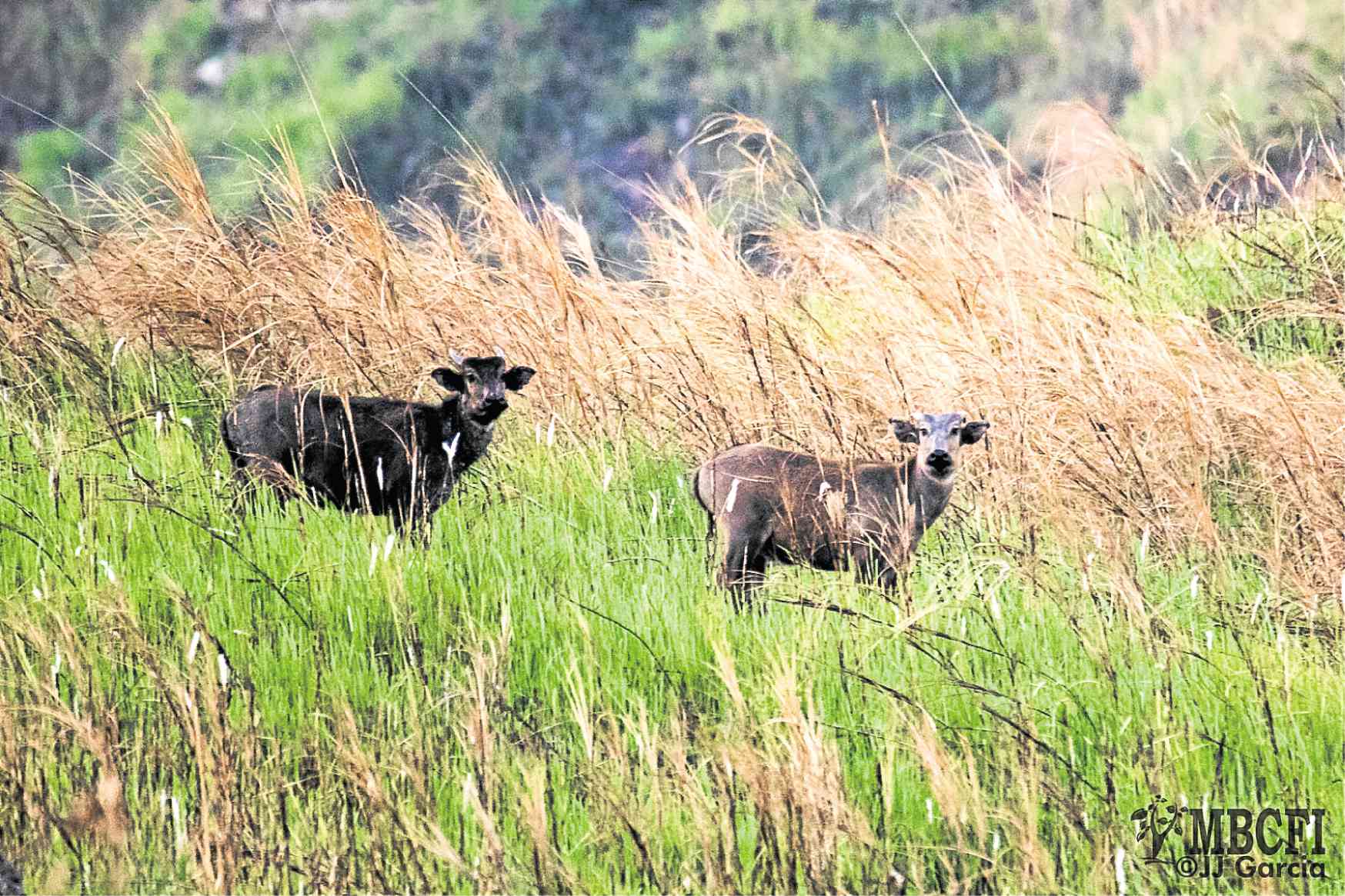Habitat loss, poaching blamed for decline in tamaraw population

MINDORO’S PRIDE Herds of the critically endangered tamaraw (Bubalus mindorensis) graze in Mounts Iglit-Baco National Park in Occidental Mindoro province amid threats of poaching and forest destruction. —PHOTO COURTESY OF MINDORO BIODIVERSITY CONSERVATION FOUNDATION
CITY OF CALAPAN, ORIENTAL MINDORO, Philippines — The number of tamaraw (Bubalus mindorensis) now roaming in the mountains of Mindoro has declined to below 500 as conservationists blame human activity for the reduced population of this animal endemic to the island in Southern Tagalog.
June Pineda, Tamaraw Conservation Program (TCP) coordinator of the Department of Environment and Natural Resources (DENR), said the latest count held in mid-April at Mounts Iglit-Baco National Park in Occidental Mindoro showed 466 to 494 tamaraw, lower than last year’s 523 animals.
The International Union for Conservation of Nature’s Red List of Threatened Species has classified the tamaraw as “critically endangered,” with its population trend described as “decreasing.”
Pineda said the decrease in tamaraw population in Mindoro could be attributed to “continued habitat destruction, hunting and poaching.”
The DENR, in its website, said the number of tamaraw in the early 1900s was estimated to be at 10,000, but an outbreak of rinderpest (infectious viral disease affecting cattle, also called “cattle plague”) in the 1930s reduced the population drastically.
Article continues after this advertisementThe tamaraw is often mistaken for a small carabao (water buffalo). It is a meter tall and its tail is shorter than a carabao. Its horns are V-shaped unlike the carabao’s flaring ones.
Grace Diamante, executive director of Mindoro Biodiversity Conservation Foundation, said TCP, through the help of IUCN specialists, said the actual count used the “simultaneous multivantage point count method” where teams were stationed at 18 observation sites or vantage points in the national park, to avoid multiple counting and ensure an accurate count. —Madonna T. Virola